Applied Sessions
Please scroll down to read biographies of the presenters.
- Feedback to Athletes, by Kevin Ball
- Gymnastics and the Coaching Biomechanics Interface, by Gareth Irwin
- Motion Analysis, by Rene Ferdinands
- Gareth Irwin
- The Art and Science of Manuscript Writing and Reviewing for Sports Biomechanics, by Young-Hoo
- Olympic Weightlifting, by Andy Tysz
- Nordic Skiing Mechanics and Physiology, by Gerry Smith
About the Presenters
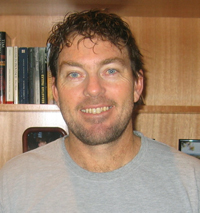 | Kevin Ball has been involved in sports biomechanics for the past 20 years as lecturer, researcher, coach and applied practitioner. After completing his undergraduate degree at Wollongong University, he worked as biomechanist at the Australian Institute of Sport for seven years, working with Olympic sports.Ball then moved to Victoria University to complete an MS examining balance and posture control and PhD looking at the golf swing. During this time he was also employed as biomechanist and kicking coach for an elite Australian Football League (AFL) team. In 2003 Ball became the first biomechanist employed full time in professional sport in Australia, working with Fremantle AFL team. He currently teaches sports biomechanics at Victoria University and has 14 honors, masters and PhD students. Kevin also continues to work as biomechanist and specialist kicking coach for the Melbourne Demons AFL team, the Melbourne Storm National Rugby League (NRL) team and with the Australian Institute of Sport AFL squad. He is also a panel member of the AFL kicking coaching development committee and has presented to over 50 AFL and NRL coaching seminars. Ball has been on the ISBS board of directors since 2008. |
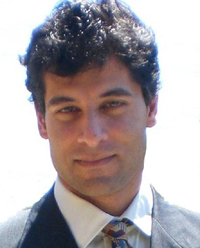 | René Ferdinands received his Ph.D. in biomechanics from the University of Waikato in New Zealand. His research applies various analytical mechanical methods to model human movement in sports with a view of improving performance and reducing injury susceptibility. In particular, he has applied his research to cricket bowling. During his PhD, he developed the first three-dimensional kinetics model of bowling in cricket, and he also completed a post-doctoral project funded by New Zealand Cricket to develop a forward solutions model of bowling. In addition, Ferdinands made an important scientific contribution to the development of the current International Cricket Council measures of determining bowling action legality. He is currently lecturer at the University of Sydney where he conducts research programs in cricket, golf, baseball, throwing, football, sprinting, pistol shooting and equine biomechanics. In his career to date, he has taught classes in sports biomechanics, clinical biomechanics, human mechanics, skill acquisition and sports coaching. Ferdinands is also an accredited cricket coach, and he is currently editor of the ISBS Coaching Information Service for cricket. From 2003-2006, he was appointed as the Cricket Expert for Sports Media, which provides a worldwide physical education information service. He also specializes in golf biomechanics, and has developed a full body three-dimensional kinetics and power flow model of the golfer. He was invited to lead a seminar on golf biomechanics at the International Society of Biomechanics in Sports in Ottawa in 2004. He presented a prototype swing model that potentially reduces lower lumbar stresses. He has published several articles in peer reviewed journals and has presented in numerous biomechanics conferences worldwide. |
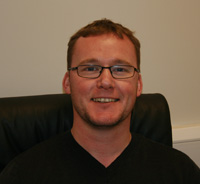 | Gareth Irwin completed his PhD in biomechanics and gymnastics at the University of Bath, UK. He has been head of biomechanics at the Cardiff School of Sport, University of Wales Institute, Cardiff, UK, since 2000. As a former international competitor and national gymnastics coach, Irwin’s sports background enriches his interpretation of sports biomechanics. His underlying research philosophy is driven by a desire to understand and explain sporting performance using grounded scientific methods to address meaningful questions that inform researchers, coaches, performers and clinicians. The “coaching-biomechanics interface” is at the centre of his research. He examines research questions aimed at making training more effective and efficient, and ultimately embedding scientific rigor within an ecological valid coaching environment. He currently leads work in this area on a major research project in the UK exploring the use of wireless sensors in coaching and has won national and international awards for his work. His continuing aim is to transfer research findings into practical settings; a theme which will underpin this year’s gymnastics symposium. Irwin has attended all ISBS conferences since 2001, is a fellow and currently vice president (Awards) of ISBS. |
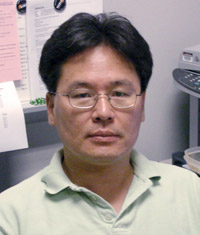 | Young-Hoo Kwon is a Professor of Kinesiology and Director of the Biomechanics Laboratory in the Department of Kinesiology at Texas Woman’s University, Denton, Texas, USA. He joined TWU in 2002 and his former employments include Ball State University (1997-2001) and Korea Institute of Sport Sciences (1993-1997). Young-Hoo is originally from Korea and finished his BS (Astronomy, 1984) and MEd (PE-Biomechanics, 1986) degrees at Seoul National University, Seoul, Korea. He received his PhD (Exercise & Sport Science-Biomechanics, 1993) from the Pennsylvania State University, University Park, Pennsylvania, USA. Young-Hoo's research interests include sport biomechanics (golf swing analysis in particular), human mobility biomechanics, motion analysis applications, computer applications in sports/biomechanics, and development of comprehensive motion analysis software. He is the creator of the Kwon3D motion analysis software. Young-Hoo has been an active member of ISBS since 1997 and has served for ISBS in various capacities: VP of Publications (2002-2007) and Board of Directors (2008-current). He became an ISBS Fellow in 2009. He has given two keynote lectures (2000 & 2009) and one applied session lecture (2002) at the ISBS Conferences since 1999. In 2007, Young-Hoo started his new role as the Editor of Sports Biomechanics (the journal) and is finishing up his first term this year. He will share his experiences as the journal editor with the participants in this year's Conference. |
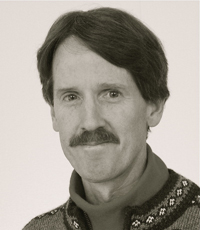 | Gerald Smith is currently a professor of biomechanics at Utah State University in Logan and fellow of ACSM. Prior to master’s studies at University of Illinois, Urbana-Champaign and doctoral studies at Penn State University, he was a secondary physics/math teacher for 10 years. His research interests center around human locomotion with focus on Nordic and alpine ski biomechanics. Smith was a faculty member at Oregon State University for many years prior to working at the Norwegian School of Sport Science in Oslo where the biomechanics lab was the primary research center for cross-country skier testing in Norway and hub for alpine ski projects. He has been researcher and director for several IOC Olympic sponsored projects (Seoul, Barcelona, Albertville, Lillehammer and Nagano) and collaborates internationally on ski biomechanics research. |
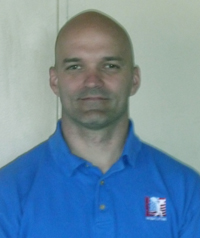 | Andy Tysz grew up in New Port Richey, Florida, and is a former football player and javelin champion. He is currently the head coach of the United States Olympic Education Center’s resident Weightlifting Team. He is also an adjunct faculty member in physical education at Northern Michigan University teaching Olympic lifts and performance. Tysz evolved through USA Weightlifting's Mentor/Apprentice Coach Program in Colorado Springs, Colo. from 2002-2003 and went on to become USA Weightlifting's Regional Coach in Crown Point, Indiana, from 2004 to 2007. He graduated from University of South Florida with a bachelor’s of science degree in Secondary Physical Education in 1992. He also received his master's degree in sports administration from Valparaiso University in 2007. He enjoys philately, cycling and weightlifting in his free time. |


